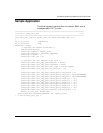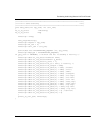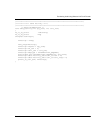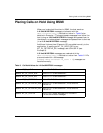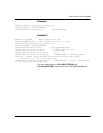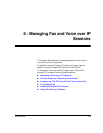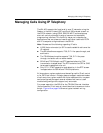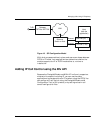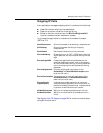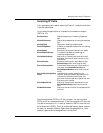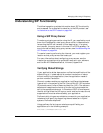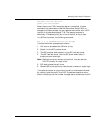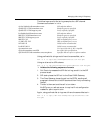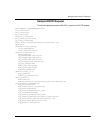
Managing Calls Using IP Telephony
November 2009 215
Managing Calls Using IP Telephony
The Bfv API supports fax functionality over IP networks using the
Session Initiation Protocol (SIP) and the H.323 protocol as well as
the PSTN network (using ISDN, RBS, R2 MFC, and analog loop
start call control protocols) through a common and consistent
programming interface. This flexibility helps you to develop fax
applications that can place and receive calls over traditional PSTN
and IP transports using modules or the SR140.
Note: Be aware of the following regarding IP calls:
H.323 (fast or slow start) or SIP is used to establish calls over the
IP network.
The SR140 software supports T.38, G.711 fax pass-through, and
audio calls.
The TR1034 board module supports T.38, G.711 fax pass-
through, and audio calls on some models
SR140 and TR1034 both use RTP sessions before the T.38
transmission is established. The RTP contains the CED or CNG
tones used to establish a fax call.
Only G.711 DTMF generation and detection in the RTP stream
is supported on the SR140 and TR1034 platforms.
All channels on a given module must be configured for IP call control
or for PSTN call control. Dialogic does not support combined modes
of call control on a given module. Multiple modules within a system
can be configured to support several modes of call control, each
module being configured to support only one mode.
For proper operation, the SR140 or the TR1034 Ethernet interface
(the one used for IP call control) should be wired to a common hub or
switch. Figure 19 on page 216 shows a typical network wiring
configuration.



